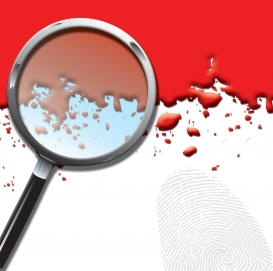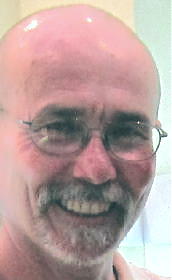-
- 28
May - (0)
Heroin Ramble
“How are you?” I asked, looking up from the desk. “I’m sick, to tell you the truth.” She was a trim, attractive young woman of around 20, dressed in the style, with a beautiful smile in spite of feeling sick from opiate withdrawal..
 I was in a methadone clinic for the first time in a couple years, and realized that a client had been hollering with violent intent in the lobby. That’s against the rules, but not unheard of in a methadone clinic. My young friend nervously and fearfully slid across a rack of documents toward the corner. She said she had issues, I would guess raised in a violent or somehow abusive household, which is a safe bet with people who become hopelessly addicted to drugs at such a young age.
I was in a methadone clinic for the first time in a couple years, and realized that a client had been hollering with violent intent in the lobby. That’s against the rules, but not unheard of in a methadone clinic. My young friend nervously and fearfully slid across a rack of documents toward the corner. She said she had issues, I would guess raised in a violent or somehow abusive household, which is a safe bet with people who become hopelessly addicted to drugs at such a young age. That sort of background for the young opiate addict is common among women. There’s no quicker, more effective way to feel really good than by using an opiate, so it’s a great escape from an abusive life…or any other life if you like.
Addicts who came to methadone clinics for help in the early 1990’s and before were self-avowed heroin-injecting addicts. These days it’s oxycontin, pills, smoking heroin…that sort of thing. Don’t get me wrong, there are plenty of used, abused and discarded spikes lying around, but fewer people need to stick a needle in their arm to get tremendously high when the heroin is good enough to smoke, like it was in Viet Nam.
The clinic director, a friend of mine, advised that when people came to his clinic years ago, more of them truly wanted to get well, and they had a tendency to come, get serious about treatment, and if methadone treatment was going to work for them, it did. They stayed in treatment, followed the rules, led better and sometimes productive lives free of street drugs. These days it’s different. People come, they get over being sick (withdrawal), and then are back on the street copping dope or in doctor’s offices scamming prescriptions. These days, something’s different. Perhaps bottoms aren’t low enough, perhaps there’s too much enabling available in our society. More addicts these days are willing to go to any lengths to get and stay high, including methadone clinics to avoid withdrawals till something can be stolen and sold for another fix of the good stuff.
Being in active addiction on the street is a lot of work. Typically the road into chronic addiction, being mostly high, is more fun than the road coming out of addiction. The road out of addiction is plagued with cravings, romancing the elements of old life style that brought pleasure and typically, relapse. A person living in the middle of their recovery is working hard every day just to stay clean and sober. It ain’t easy.
What’s this mean to you? It’s simple. When an addict is active and on the street, the typical way to make a living is stealing your stuff. Since this person needs a fix every day, he needs to steal every day. After a while this affects the community. If there’s a methadone clinic in the neighborhood, they probably help a few of their clients stay off street drugs, in spite of the trend outlined in this discussion. These clients have a shot at getting jobs, they have therapy to help them keep the job and go through life, and they are in a form of recovery.
Do something nice for your local methadone clinic. At the very least, the clinic’s presence increases the likelihood of your car being in the driveway tomorrow morning.
Read more → - 28
-
- 25
May - (0)
Service Pairing
A number of non-profit agencies in New York State (and probably across the nation) will disappear over the next couple years. It’s imperative to change perspective in these agencies to a for-profit viewpoint.
 Surviving the Office of Mental Health clinic restructure and the OASAS switch of charging methods to APGs with fee-for service elements in New York will include a very tough lesson for some provider agencies. Agencies are discussing mergers and acquisitions to consolidate resources (which loses jobs) in order to increase efficiencies. Financial models are being created and most discarded because they just won’t bring in enough revenue and they expend too much human energy to deliver the services to earn the revenue.
Surviving the Office of Mental Health clinic restructure and the OASAS switch of charging methods to APGs with fee-for service elements in New York will include a very tough lesson for some provider agencies. Agencies are discussing mergers and acquisitions to consolidate resources (which loses jobs) in order to increase efficiencies. Financial models are being created and most discarded because they just won’t bring in enough revenue and they expend too much human energy to deliver the services to earn the revenue.People are feverishly working overtime to come up with plans to save jobs.
Although projecting income requirements is a big part of the survival work, I don’t hear much about the nuts and bolts of the matter: Service Pairing.
Since threshold visits are disappearing (one charge per day with most services performed for the client included in that charge), the new financial model for these agencies needs to include two separately charged services for a visit. A number of elements come into play in determining which services are scheduled, and when.
It’s no secret that agencies work differently; they all have a different personality. The business processes of each agency need to be evaluated and modified; exactly when the second service is scheduled and what it will be for a client visit will vary.
- Is the person scheduling the service considering outcomes?
- Is the service a key part of the treatment plan?
- Is the service being scheduled within a reasonable time since the last one?
- Can the office location logistically handle providing both services?
- Is the properly credentialed person available to provide the service?
The questions bring up concerns and change from agency to agency.
Is your agency ready to include service scheduling at the time the treatment plan is written? Is your front desk person of the personality type to effectively juggle a few more balls, a few more considerations in scheduling visits? What workflow procedures need to be considered in the workflow models? Is the team ready to evolve on this business level with the client treatment needs?
Analyzing and redesigning business processes needs to be part of the restructure of your financial model. You may need to hire a masters level person at the central scheduling desk (expensive, effective in some situations). You may need to upgrade your enterprise software to the tune of thousands of dollars…oh, you don’t have enterprise software?
If your agency is properly staffed to survive, there just aren’t enough human resources to analyze, design and implement new processes and you need help: info@ehrsio.com.
Read more → - 25
-
- 24
May - (0)
Help Anywhere
You’re in a crisis. You need some mental-help, fast, and it’s not on the way. It can be wherever you are in the form of mHealth.
 Lets say your therapist’s office or Community Mental Health Center is where you live in Brooklyn, Queens or the Rockaways and you work in Manhattan or The Bronx. It can take you an hour or more to get to treatment from work when you include waiting for the two trains and the bus that get you there, effectively knocking you out of up to a half-day’s work for a daytime appointment.
Lets say your therapist’s office or Community Mental Health Center is where you live in Brooklyn, Queens or the Rockaways and you work in Manhattan or The Bronx. It can take you an hour or more to get to treatment from work when you include waiting for the two trains and the bus that get you there, effectively knocking you out of up to a half-day’s work for a daytime appointment. Good therapists are busy folks, and you want the best help you can get from them. Your employer wants you on the job. Going to a session during normal business hours is preferable to late or weekend meetings, when the therapist’s mind can be on family, his own crisis of the moment, or ice cream.
Employers hire folks to do jobs for them, not go to therapy, so they can be less than supportive. How do you do minimize time off work to see the therapist for a truly effective session? mHealth is an answer, using technology to minimize travel time and get the treatment you need to do your best at that job and life in general.
Mobile clinical health will reach $4.6 Billion annually by 2014 according to The Medical News . A good portion of that may be mental health services offered over the phone and internet…I hope you’re getting some of that by reading this over the internet right now, free.
Currently the physical health market is way ahead of mental health and addictions, as is usually the case with technology. Health monitoring with remote devices for diabetes, cardiac conditions and other chronic illness has been around long enough to make mHealth a $1.5 Billion industry today. Sessions over the phone and via webcam on the internet are being funded by the government in rural areas like upstate New York. This is a new way of doing business for us.
Clients like mHealth because they can get in a session without losing work…employers like it for that reason, too. Therapists like mHealth because they don’t really need to go to the office…they can connect with the client anywhere. Insurance companies like mHealth because they can pay less for a session (trust me, they’ll figure out how).
Mental Health folks like assessments. These tools can measure improvement over a period of time. For example, if you answer ten or twelve questions rated on a scale of 1-5 for each question, you have statistics to measure whether all those co-pays, direct payments, and insurance payments are doing any good. If treatment’s not doing any good for you, it’s only reasonable to fix the problem, the focus of discussions, and the tools employed by the client to get better.
Doing that assessment over the phone, or logging into you personal-health website with the therapist takes a few minutes and pays off in recovery.
Read more → - 24
-
- 20
May - (0)
Hunsicker Out of NAATP
Ron Hunsicker has been terminated from his position as president and CEO of the National Association of Addiction Treatment Providers (NAATP).
 Apparently, the termination was prompted by confirmation of some sort of financial impropriety. Gary A Enos, a contributing editor for Behavioral Healthcare’s on-line magazine reported that the press release was issued to members on May 10, 2010 and advised NAATP’s due diligence included use of an outside accounting firm and conversations with the Pennsylvania Attorney General’s office.
Apparently, the termination was prompted by confirmation of some sort of financial impropriety. Gary A Enos, a contributing editor for Behavioral Healthcare’s on-line magazine reported that the press release was issued to members on May 10, 2010 and advised NAATP’s due diligence included use of an outside accounting firm and conversations with the Pennsylvania Attorney General’s office.This is big doin’s in River City, and it’s a shame to see a fall like this, under these circumstances. A number of years ago I attended a NAATP conference, and thought it was a fine, if small, affair. Hunsicker grew the organization since then, and is well respected in the field. I expect people will simply shake their heads and move on.
I wonder about the nature of the improprieties. Were there simply accounting problems that indicated incompetence (Hunsicker was not CFO)? Did money disappear to an unknown destination? Hunsicker may not be guilty of more than poor oversight of business matters, or it could be an indication of crime. We don’t know.
I’ll keep an eye out for the details and update you when I find them.
Read more → - 20
-
- 17
May - (0)
Exercise & Mental Health
Depressed? I mean with a clinical diagnosis, not the namby-pamby “I broke a fingernail” depressed. Good News! Exercise will help you the most. Some people see relief from depression after their first exercise session. Lift heavier things, sweat a little more than the the guy next to you who’s diagnosed with anxiety…that will do you the most good. Keep at it, a consistent program is best.
 Diagnosed with high anxiety? Good news: Exercise will help you more than somebody with a low level. It’s a good idea to start going to the gym or engaging in some program now, so you can to notice the difference by the end of two to three months. Get aerobic, breathe harder, break out that dusty bike, sweat!
Diagnosed with high anxiety? Good news: Exercise will help you more than somebody with a low level. It’s a good idea to start going to the gym or engaging in some program now, so you can to notice the difference by the end of two to three months. Get aerobic, breathe harder, break out that dusty bike, sweat!Dr David Landers is an expert on this subject, and his white paper pulls together evidence since 1905 that indicates exercise can improve our mental health.
The positive effects of exercise last for hours, and by combining exercise with techniques like my earlier post on “Breathing”, and you just might feel better. Isn’t it worth a shot? Personally, I think this is true whether someone is diagnosed with mental health problems or not.
While the effect of regular exercise on these conditions varies, and you’ll see all sorts of disclaimers by scientific types that it may or may not help, and that more research is needed, the evidence I’ve seen is enough to suggest trying a program and see if you feel better. If you don’t, oh, well, the only benefit may be the delay of that impending heart attack.
We all have friends or acquaintances who tendency to get a little down…or worse.
Two friends of mine, one diagnosed as bi-polar with a long history of partial day-treatment and many different medications, the other an out of work Heating, Ventilation & Air Conditioning technician, both say they feel better when they are exercising regularly. I have many friends, some with mental health and addictions diagnoses, some without, all of them who go to the gym feel better about themselves. Nobody I know feels worse after a workout unless they’re just plain sick and need to go to bed.
It doesn’t seem to matter whether we’re diagnosed with a mental illness or not, regular exercise helps improve our sense of well-being. In addition to the physical benefits of burning the extra calories from the pasta and too much Mexican food over the weekend, exercise helps our attitude. I know I feel better when I’ve finished my workout.
I’ve used all the excuses. I don’t have time. Something comes up. Still, I somehow work in visits to the gym four to five times a week, and as long as I’m there and dressed for it, I feel funny if I don’t lift something heavy or go stand on treadmill or elliptical machine.
Read more → - 17
-
- 14
May - (0)
Breathing as Mental Health First Aid
My chest was getting tight. I had a weird feeling. It felt like I couldn’t breathe.
 Then I woke up.
Then I woke up. Why I had this anxiety event (no, not a heart attack) was irrelevant. I’m sure it was some manifestation of fear, and I’ll get around to that pervasive subject soon enough. The primary thing a person with an episode like this wants to do is get past those quite uncomfortable feelings….FAST!
Millions of people acquire tools to deal with symptoms like this, and once they tire of the misery, begin to use the tools.
And, here’s what I’ve learned:
- Sit quietly
- Relax the shoulders while taking a deep breath; ignore the surroundings
- Feel the next breath go down your spine as you draw it in, all the way to a spot just below the navel
- Let the breath come out, feeling it pour through the heart
- Repeat until you realize the symptom is gone
I know, it sounds absurd for a breath to make it to a spot below the navel…the lungs aren’t that big.
Yes, yes, we breathe out through our nose or mouth, not the heart.
There are a ton of objections for which I have no answer. All I can say is that this works. Breathing out, look out, focus on everything in the vicinity, as far as you can see, hear, feel or smell. It’s a general sort of awareness with no focus.
Many sufferers of anxiety or depression relieve symptoms with medication, and people with these problems who I talk with confirm that medications work fine, once you settle on the right one. For some this is temporary, for others it’s a lifelong affair to rectify brain chemistry that’s out of whack.
One route to take is to focus on doing something…anything. That works for a while, and anxiety returns later. For many people it gets worse.
Breathing is an effective catch-all tool to get past uncomfortable feelings. Breathing is more than air moving in-and-out, it’s a technique that some say simply refocuses the mind, others say it’s a spiritual exercise. Breathing is also the first step in most meditative techniques and yoga.
Seeking the help of a pro is always the best route if you don’t know what’s going on with feelings that are somehow…damaged. I wasn’t kidding about trouble breathing being a sign of a heart attack. Consulting a mental health professional is always the best bet for a long-term solution.
Read more → - 14
-
- 12
May - (0)
Mental Health Parity Because We Need It
It costs more out of your pocket to get well from problems of the mind or addiction, right? Insurance companies avoid paying for or charge higher co-pays or cut short programs for treatment, right? That’s the way it used to be, and could be again.
 From stage left entered our hero, “Mental Health Parity”. Put simply, this law forces insurance companies to deliver coverage for mental health services on par with physical health coverage. It’s old news because this is a 2008 law, an attempt from our legislative system to take positive action that helps people.
From stage left entered our hero, “Mental Health Parity”. Put simply, this law forces insurance companies to deliver coverage for mental health services on par with physical health coverage. It’s old news because this is a 2008 law, an attempt from our legislative system to take positive action that helps people. On May 9, 2010 a New York Times headline declared “Fight Erupts Over Rules Issued for ‘Mental Health Parity’ Insurance Law”. Insurance companies are picking holes in the law in order to avoid paying for adequate treatment for problems of the mind. I suppose we can’t blame the insurance companies for trying to keep our premiums in their pockets, but it seems reasonable that they should pay for treatment that works, and what they don’t pay, we pay.
The tragic outcome for some people is that without parity, they won’t get treatment because they can’t afford the co-pays or to go “out of network” to see a specialist who can help them. Not getting treatment can lead to physical problems in addition to their condition of the mind getting worse, or at least not getting better.
These days, most of the people who are recovering from addiction and alcoholism “went to rebab.” Every day, people are overcoming depression, anxiety and mayhem in their lives through therapy and medication. Studies are showing they are less likely candidates for heart disease, obesity, chronic pain and other physical conditions because they’re taking care of their mind. Body, mind spirit, it’s all connected.
In the long haul doesn’t it make sense to treat my anxiety now to avoid paying for my next heart attack?
In this matter, I have two heroes. Representative Patrick Kennedy from Rhode Island and Wendell Potter from Washington DC (I forgive him for that). Kennedy supports Mental Health Parity and making the recent healthcare laws as beneficial for mental health and addiction treatment professionals. Wendell Potter is an advocate with the Center for Media and Democracy. If you’re personally affected by this issue, you can take a tiny bit of action by connecting with either of these fellas.
Read more → - 12
-
- 10
May - (0)
Setting Productivity Benchmarks
Either counselors produce or we’re all out of work. And it’s best if they help some consumers along the way.
Mary Ann Vassallo, CFO of Family & Children’s Agency on Long Island advised me of a different focus on a big question of the moment: “What is best for the client?…All we talk about now (is) how many units of service should be required for each fte. Is 1100 a year right, not enough, 1500 too many?”
 I quested for data.
I quested for data.We used the hot dog cart approach in one of my past lives: If you’re going to make a profit on hot dogs, you need to know how much it costs to deliver a hot dog that people will like enough to bring friends back for more. Cost of treatment analysis in a big agency can get pretty granular:
- administrative time
- different rates for services/personnel
- business processes
- vacation & time off
- security
- compliance
- software expenses
- scheduling requirements
- treatment documentation
- OUTCOMES
There’s more, but enough already. We’re busy people who want the short, easy answer so we can get to work on solutions. From what I’ve seen, there is no easy, short answer, so I went in search of an expert in the matter. What should I find on The National Council’s website, but David Lloyd’s MTM Services’ productivity calculator. Eureka, I thought!
David Lloyd’s thought is that the EHR is key to enhancing productivity and measurable outcomes, which has been EHR software manufacturers claim for many years. I’m a fan. His organizations’ recent work in Ohio, Massachusetts and New York has been influential and exemplary.
Then I saw CEO Michael Flora’s accompanying presentation. It’s 76 slides of very exacting description of the revision and implementation of best practices throughout his Ben Gordon Institute.
As I suspected, still, there’s no easy, short answer.
The approach is nothing new, an extension of discovering how much it costs to put a hot dog out the window to a happy customer. The actions Michael Flora explained to NCCBH were basic, proven business principles, and they can be replicated at other agencies to show dramatic business improvements…answering important questions like Ms Vassallo’s.
One business improvement is the ability to measure treatment outcomes by analyzing services rendered and continuous results of various treatment instruments. Creating your own agency benchmarks for treatment outcomes seems to be the answer to what’s best for the client.
Start a project. You could ask how treatments and their associated instruments used in your agency are working to improve depression outcomes. If you have an EHR in use, existing data can measure improvements for different conditions. What are the key variables?
- Number of services in a treatment time frame?
- Group thereapy?
- Individual therapy?
- Ongoing assessments to measure progress?
- Medication?
- Client conditions throughout treatment?
- …at discharge?
- Relapse occurance
- …frequency?
An EHR will usually have these elements recorded for as long as you’ve been effectively using it. Writing a report should be a simple matter.
If you don’t have an EHR, you may want to make that a priority for the agency.
In either case, studies like this have a lot to say about improving agency efficiency and improving treatment quality. A key reason studies like this don’t get done is that qualified people are usually busy people, so the reasonable and sensible approach may be to hire somebody for the project.
Contact me any time.
Read more → - 10
-
- 06
May - (0)
OH, No!
The Internet’s down!
What will we do? A question for which one of those wise old people I grew up with who always had an answer (usually right) comes to mind: “What did people do before we had the Internet?”
 Hmmmm. I have to think about that. I think we waited. So, that’s what I did this morning. At other times in my life, I might have felt anxiety over that, but not this morning. I appreciate the old adage, “when the going gets tough – the tough go to lunch”.
Hmmmm. I have to think about that. I think we waited. So, that’s what I did this morning. At other times in my life, I might have felt anxiety over that, but not this morning. I appreciate the old adage, “when the going gets tough – the tough go to lunch”.In this particular vocation, I read a modicum of rather dull government documents. I get those documents off the web, so my planning consists of walking into my office in the morning, hitting a few sites on the web, and finding something I think is necessary or interesting in our business, and opening a blank document. I get a number of my quotes and topic information off the web, but not this morning…the Internet’s down!
I cannot imagine sending off to a government agency for a mailing, or going to some office to retrieve a document I may or may not be able to make sense out of and turn into something interesting or relevant.
I’d planned to write a piece about SAD, Seasonal Affective Disorder: Is it Real? Since it didn’t, I’m laying feelings and opinions out there. We all have those, and as we all do, I find mine most interesting and valid. Perhaps they are not so interesting or relevant to your life, tough cookies, the Internet was down!
Read more → - 06
-
- 04
May - (0)
Treating Body, Mind & Spirit
Insurance companies are evil.
 That’s the feeling I get whenever I write a check for a premium. I get that feeling when I’m denied payment for a medication because it’s out of formulary or the co-pay goes up. Insurance companies encourage fast-food treatment for what can be lifelong difficulties…when we take that approach with nutrition, we end up obese. When we take that approach with behavioral/mental health and addiction/alcohol problems prescribing only medication as the answer, we can end up as zombies with mind-problems that are hidden and never resolved, or chronic conditions that we don’t learn how to live with.
That’s the feeling I get whenever I write a check for a premium. I get that feeling when I’m denied payment for a medication because it’s out of formulary or the co-pay goes up. Insurance companies encourage fast-food treatment for what can be lifelong difficulties…when we take that approach with nutrition, we end up obese. When we take that approach with behavioral/mental health and addiction/alcohol problems prescribing only medication as the answer, we can end up as zombies with mind-problems that are hidden and never resolved, or chronic conditions that we don’t learn how to live with. Twenty years ago I was a privileged patient of a psychotherapist in Ashland, Oregon. At the time, I was having some trouble with life that was rooted in low self-esteem. I couldn’t pay the bills no matter what my income; everything I did seemed somehow wrong. I attended individual therapy and a men’s group and also joined a self-help group, and over the course of years I made significant changes that affected my larger future. I also started meditating. In short, a combination of therapeutic, behavioral and spiritual efforts worked.
By the way, I’m not a Christian, Buddhist, Hindu, Moslem or a devotee of any religion…I just meditate regularly. It works for me.
Since then, I temporarily added medication into the mix for some anxiety I was experiencing after a heart attack, along with individual therapy and self-help. The medication worked. I no longer need it or take it, and I don’t participate in individual therapy, it worked, too.
Today, I have a good life, and a holistic approach to treating the body, mind and spirit is integrated into that life. Others can and do find this successful, too.
A friend of mine recently couldn’t get the medication mix right for his depression. It took day-treatment to get him on track. Now his medication is right, he made some behavioral changes and it worked…depression faded away.
There’s too much evidence around me about what works to ignore it.
Insurance companies exist to make money. Wendell Potter is watching them, but still, they will demand fast-food treatment because it’s cheaper for them. Effective treatment takes time and a combination of efforts targeted toward body, mind and spirit.
The patient has to want to get better, and that’s an inside job. From what I’ve seen, it’s usually a patient choice to recover by taking the tough road. He has to do what it takes to recover, body, mind and spirit…or just take drugs and even though the patient doesn’t realize it, be slowly changed into a different person.
Read more → - 04
